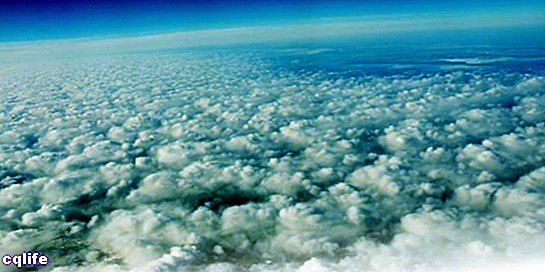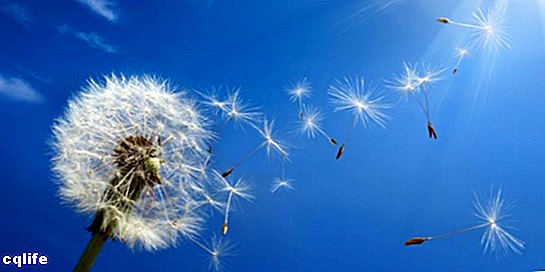We explain what air is and what it is made of. Also, what are its physical and chemical properties. Air pollution.

What is the air?
We commonly call air homogeneous mixture atmospheric gases that are retained by the gravity of our planet.
Air is a very important gaseous mixture for the life on Earth, since it performs protection functions from solar rays and other foreign elements such as meteorites. In addition, it provides the dynamic chemistry of the planet a set of essential elements of a gaseous nature, such as the oxygen necessary for the breathing. In addition, the air allows the hydrological cycle to take place, as it contains water vapor, which produces precipitation through the condensation and the formation of clouds.
Air is made up of various gaseous elements, which normally cannot be differentiated or perceived separately. However, it is possible to liquefy the air in laboratories (make it liquid) and proceed to separate its components. In this way many of the elements used in the chemical industry. Its properties and composition vary according to the conditions of Pressure Y temperature in which these elements are at the time of making the measurements.
The importance of air was perceived by man since ancient times, when it was considered one of the four basic elements of the nature, along with the fire, the Water and earth. However, at present, its properties are known in more detail and it is possible to get more out of them.
What is air made of?
Air is mainly composed of 20.94% oxygen, 78.08% nitrogen, 0.93% argon, 0.035% carbon dioxide and 0.40% of water steam, these being its predominant components.
Other elements present in the air, although in a minority, are neon (0.0018%), helium (0.0005%), methane (0.00017%), krypton (0.00014%), hydrogen (0.00005%) and ammonia (0.0003%).
Physical and chemical properties of air

The air varies according to its location in the following layers of the atmosphere: troposphere, stratosphere, mesosphere and thermosphere. The higher it is, the less pressure and weight the air will have, since the heavier elements it can contain are attracted more strongly by the Earth's gravity.
In general, air is less heavy and has less density than water (air has a density of 1,225 kg / m3 at a temperature of about 20 ºC). It is transparent, colorless, odorless, and tasteless, except when contaminated with a particular substance.
The air has no volume its own since it is a gas and is incapable of existing in a vacuum. In addition, it is a good driver of the heat.
The chemical reactions that an air mass can experience depend on the chemical properties of the constituent components. In this sense, air has approximately constant proportions of some components, but it can also have pollutants or concentrations of some substances at high levels, depending on where that air mass is located, under what conditions it is, etc.
Air pollution
Air pollution occurs when there are particles solid suspended in it, or when different gases that are naturally present in its composition exceed certain levels, and are therefore considered pollutants. There may even be a mixture of both.
Just like water or land, air is a receptor for the substances emitted during industrial, urban or waste processes that we release into the air. environment. This often brings serious complications such as acid rains (the water cycle is polluted by the reaction with corrosive or poisonous gases in the air), respiratory diseases (for the human being and the animals) or the deterioration of the layers of the atmosphere (such as the decrease in ozone layer in the stratosphere, allowing direct passage of solar radiation).
Some of the main known air pollutants are:
- Gases produced by the combustion of fossils. Carbon dioxide, carbon monoxide and sulfur dioxide are obtained as a result of burning of fossil fuels As the Petroleum, gasoline or coal.
- Chlorofluorocarbon compounds. Known as CFCs, they are some of the most damaging gases for domestic and industrial use for the ozone layer. Due to this, since 1960 its necessary replacement by other less harmful gases has been noticed (when they are applied in aerosols and refrigeration compressors).
- Methane. It is a gas with a disgusting odor, a product of the decomposition of organic material. It is present in human and animal feces, as well as in swamps and other areas of continuous decomposition of living matter. A major source of methane in the atmosphere, exceeding levels beyond normal, is the waste from large herds of livestock (cows, pigs, etc.). They constitute one of the gases that cause greenhouse effect and the global warming.
- Ozone. Although ozone is naturally found in the stratosphere, it can be found artificially in other lower layers, where it does not act as a beneficial agent but as a pollutant.
- Volcanoes and others natural disasters. The volcanoes expel, by doing eruption, huge amounts of dust, smoke and fumes from combustion into the atmosphere, generating numerous air pollutants.
